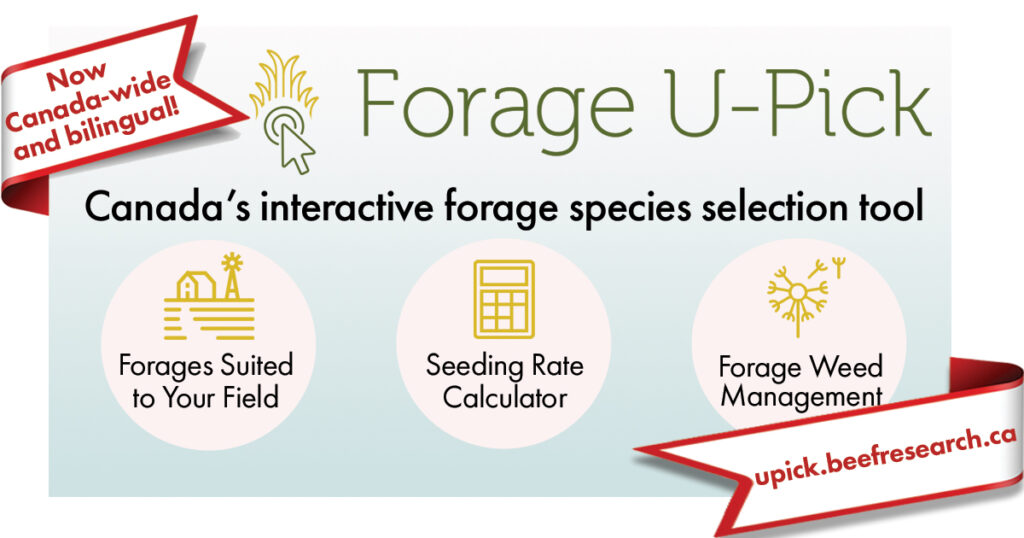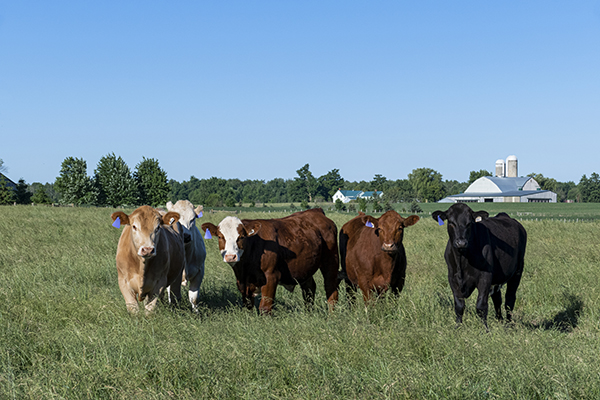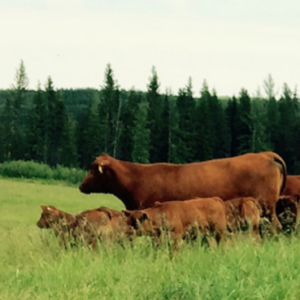Forage U-Pick: An Interactive Forage Species Selection Tool Now Available Canada-Wide 🎙️
CLICK THE PLAY BUTTON TO LISTEN TO THIS ARTICLE:
The Canadian farms producing top-quality beef are as unique as our country’s topography. They do have one thing in common–each uses forages in some way.
Forage U-Pick–a tool that helps farmers and ranchers from British Columbia to the Maritimes choose forages best suited to their fields, calculate seeding rates and manage forage weeds–is now available online at no cost.
“Selecting forage species that will thrive under the growing and management conditions of a specific field on your farm improves the crop’s productivity. Since well-managed forage is typically the cheapest source of feed, growing productive forages can widen the profit margins of a beef operation,” shares Amy Higgins of the Maritime Beef Council.
Improving accessibility for all Canadian forage growers, the new Forage U-Pick includes Eastern Canada and is available in French via www.boussolefourragere.ca. It builds upon the success and popularity of a previous version that was applicable to Western Canadian producers.
Click here for a French version of this post.

“Good quality information should not be limited. All producers need information they can take onto their farms and help to make the best decisions possible for good forage production,” Higgins adds. “Straight forage producers, livestock producers or crop producers can now all take advantage of Forage U-Pick.”
The newly expanded Forage U-Pick is not just Western made to fit the East. While forage species have general characteristics and adaptabilities that are well documented, there are regional considerations that can positively or negatively contribute to selecting the ideal forage species. For example, soil pH is a critical consideration for Atlantic growers. Forage U-Pick walks growers through defining the characteristics of each specific field and matches forages that are best suited to those conditions. It can also provide options to consider that might not have been an obvious choice.
Higgins is proud that Forage U-Pick captures much of these regional considerations and packages them into one easy-to-use, mobile-friendly site for producers.
Partnerships make projects like this happen. In addition to funding provided by the Beef Cattle Research Council, the expansion of Forage U-Pick was supported by the 2018-2023 Innov’Action agroalimentaire program under the Canada-Quebec Agreement for the Implementation of the Canadian Agricultural Partnership; Conseil Quebecois des Plantes Fourrageres; Maritime Beef Council; Ontario Forage Council; Ontario Ministry of Agriculture, Food and Rural Affairs, and through Pan-Atlantic collaboration from the provinces of New Brunswick, Nova Scotia and Prince Edward Island with Canadian Agricultural Partnership support.
Forage U-Pick originally launched in 2020 and was created through the contributions of more than 13 different organizations to help Western Canadian producers select forage species that are a good fit for their individual fields.
“Saskatchewan Forage Council is proud to have been involved in the development of the original Forage U-Pick concept and its evolution into a valuable tool for all of Western Canada. Watching it adapt for use across the country is exciting and gratifying,” said Shannon McArton, executive director of the Saskatchewan Forage Council.
For more information about the newly expanded Forage U-Pick tool, contact:
Amy Higgins
Maritime Beef Council
[email protected]
Tracy Herbert, Extension and Communications Director
Beef Cattle Research Council
[email protected]
Sharing or reprinting BCRC posts is welcome and encouraged. Please credit the Beef Cattle Research Council, provide the website address, www.BeefResearch.ca, and let us know you have chosen to share the article by emailing us at [email protected].
Your questions, comments and suggestions are welcome. Contact us directly or spark a public discussion by posting your thoughts below.

